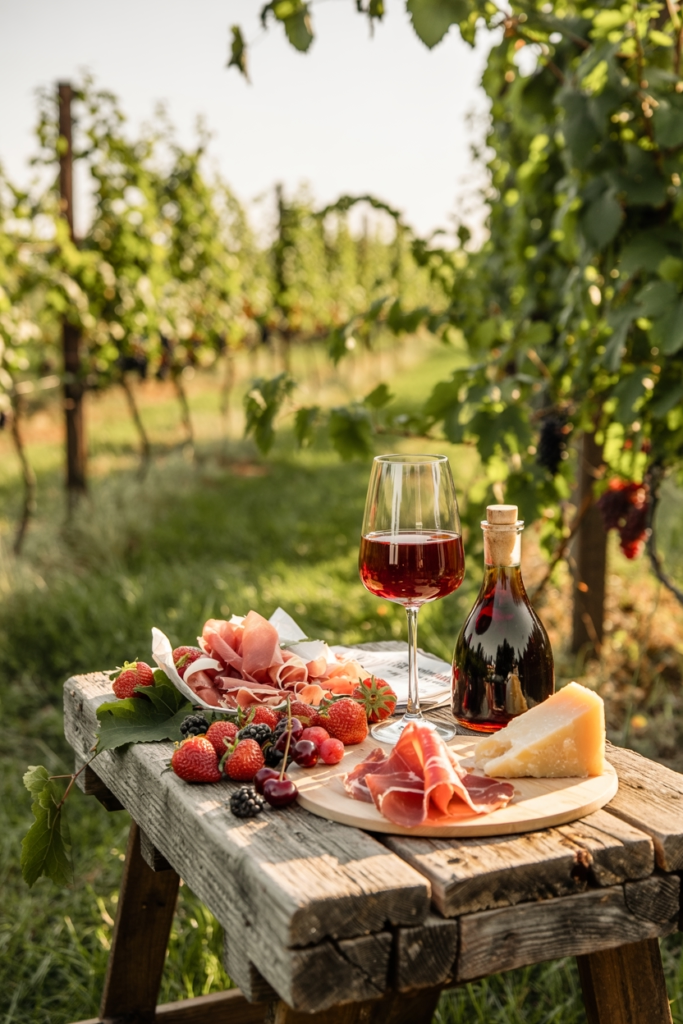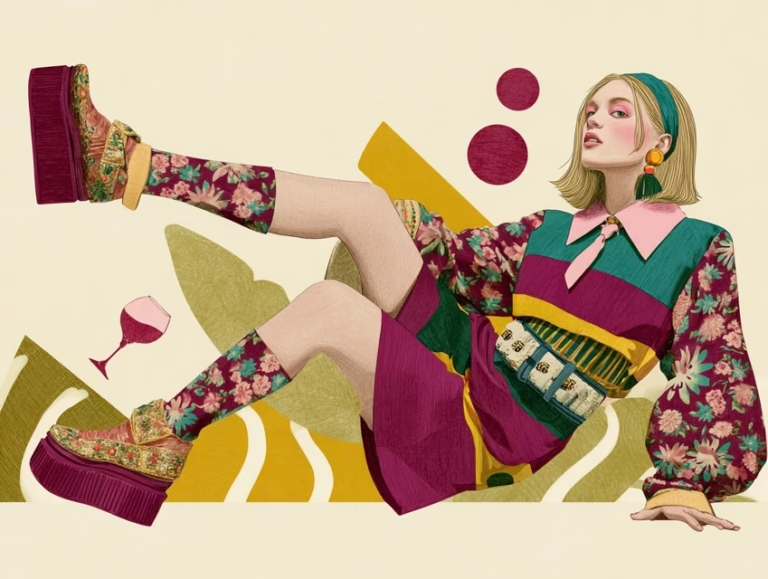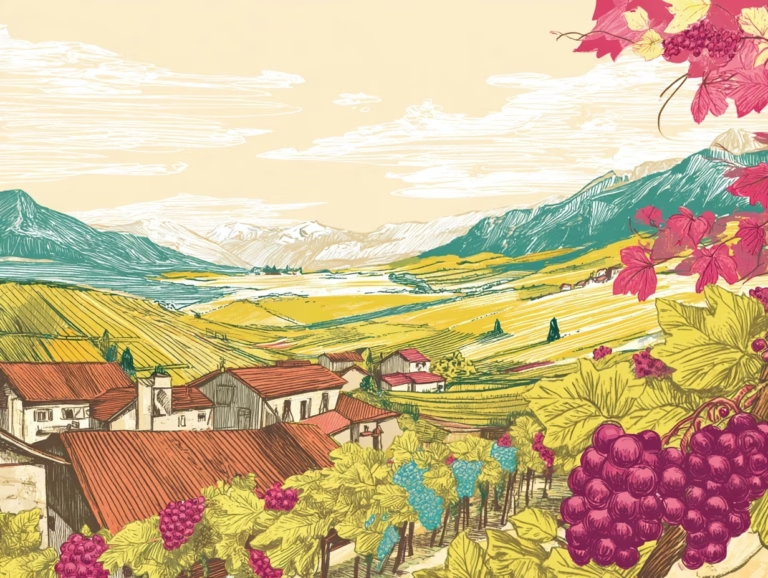Lambrusco: The Blood Red Sparkler that’s Not Just for Vampires

Picture this: You’re at a cozy wine bar, scanning the by-the-glass list for something sparkly. You spot “Lambrusco di Sorbara”—Italian, bubbly, sounds chic—and place your order, imagining a pale gold flute of something Prosecco-adjacent. But when the glass hits the table? It’s red. Or more like a deep rosé—bright, slightly vampiric, and totally not what you were expecting.
Welcome to the fabulous world of Lambrusco, Italy’s most misunderstood sparkling wine—and one of its most joyful.
Despite the confusion, Lambrusco isn’t a trick. It’s a sparkling red (or pinkish-red) wine made from a family of native grapes in Emilia-Romagna, a northern Italian region that also blesses us with prosciutto, Parmigiano-Reggiano, and balsamic vinegar.
Producing Lambrusco: The Charmat Method
Most Lambruscos are made using the Charmat method—the same technique used to produce Prosecco—which means the second fermentation (where those bubbles come to life) happens in a pressurized tank rather than in the bottle. This keeps the wine fresher, fruitier, and a little more playful than traditional Champagne-style sparklers.
Here’s how it works: After the initial fermentation turns grape juice into base wine, the wine is transferred to a large, sealed tank. Yeast and a little sugar are added, triggering a second fermentation. Since the tank is sealed, the carbon dioxide released gets trapped in the wine—creating natural bubbles. The wine is then filtered, chilled, and bottled under pressure to preserve the fizz. The whole process is fast (usually less than a few weeks), which helps capture all those juicy, vibrant fruit notes that Lambrusco wears so well.

Meet the Lambrusco Family: Lambrusco di Sorbara, Lambrusco Grasparossa di Castelvetro, and Lambrusco Salamino di Santa Croce
Lambrusco isn’t just one grape—it’s a whole family of ancient varietals, many of which are still grown on pergola-trained vines that look like wild, leafy arbors. While there are dozens of Lambrusco varieties, a few have made their way into the spotlight:

Lambrusco di Sorbara
The lightest and most floral. Pale ruby, almost rosato in color, with high acidity and notes of cranberry, raspberry, and rose petals. It’s like if a ballerina wore combat boots—graceful but with a punch.
Lambrusco Grasparossa di Castelvetro
The boldest of the bunch. Deep purple with rich blackberry fruit, earthy tannins, and a slightly rustic edge. This one can keep pace with your Pinot Noir.
Lambrusco Salamino di Santa Croce
The crowd-pleaser. Juicy, balanced, and right down the middle in terms of body and structure. The Goldilocks of Lambrusco grapes—effortless, versatile, and adored by all.
Lambrusco Production Styles
Across all three, styles range from secco (dry) to amabile (off-dry) to dolce (sweet), and while the old-school stereotype leans sugary, most high-quality producers today focus on dry or barely sweet expressions. These wines usually clock in around 11–12% ABV, which makes them dangerously easy to enjoy.
Across the styles, there are a few signature traits that define Lambrusco: a lively fizz, bright acidity, and bold, juicy fruit flavors—often leaning into red cherry, blackberry, or wild strawberry. Whether light and floral or dark and structured, Lambrusco always brings a vibrant, food-loving energy to the table.
What to Pair With Lambrusco (Besides Another Glass)
Lambrusco is the kind of wine that loves a good party—and I’m not just talking about people. It’s a food-pairing superstar, especially when it comes to rich, salty, or spicy dishes. The bubbles scrub your palate clean, the acidity cuts through fat, and the fruitiness adds contrast without overpowering.

Here are a few dream pairings:
- Charcuterie boards – Prosciutto di Parma, mortadella, salami, and Parmigiano-Reggiano. This is Lambrusco’s local love language.
- Fried chicken – Seriously. The bubbles refresh your palate like a splash of lemon between bites.
- Pizza – Especially with sausage or mushrooms. The earthy richness and tangy tomato sauce are magic with Lambrusco.
- Washed rind cheese – Funky, meaty cheeses like Taleggio, Grayson, or Willoughby find their bubbly soulmate here.
And if you’re feeling adventurous? Try a sweeter style with a flourless chocolate cake or a tart made with cherries or balsamic glaze.
How to Spot a Good Bottle of Lambrusco
Italian wine labels can be intimidating, but a few tips go a long way:
Look for DOCs like:
- Lambrusco di Sorbara DOC
- Lambrusco Grasparossa di Castelvetro DOC
- Lambrusco Salamino di Santa Croce DOC
Pay attention to words like:
- Secco (dry)
- Amabile (semi-sweet)
- Metodo Ancestrale or Rifermentato in bottiglia – These indicate more artisanal styles, sometimes cloudy, often funkier and drier, fermented in the bottle like pet-nat.
Final Sip
Lambrusco is in her renaissance era, and it’s about time. Look no further than local D.C. wine bar Maxwell Park, whose owner-sommelier Brent Kroll is a Lambrusco devotee and “Lambrusco Week” a period each year with a special menudevoted exclusively to the bright red, bubbly wine.
And rightly so—she’s sparkling, stylish, and a little rebellious—a wine that doesn’t take herself too seriously, but still knows how to turn heads.
So next time you’re craving something festive, pop a bottle of Lambrusco.



